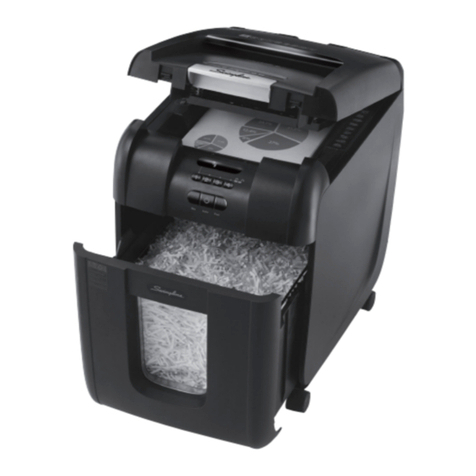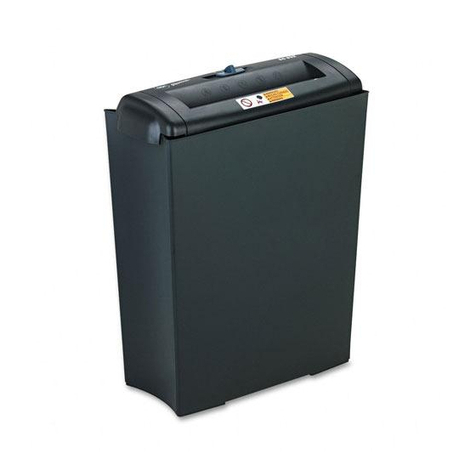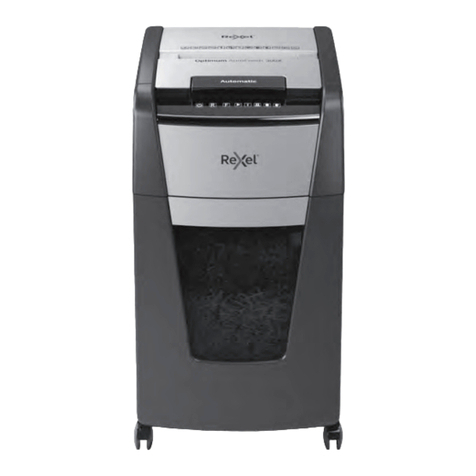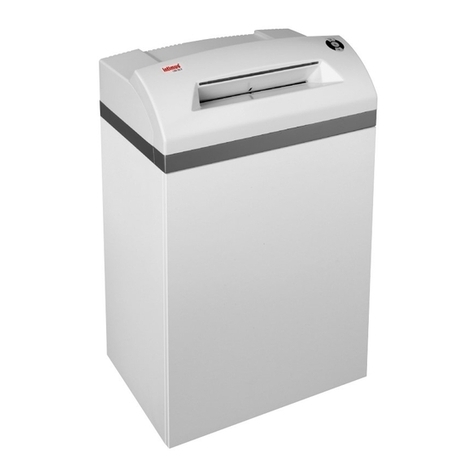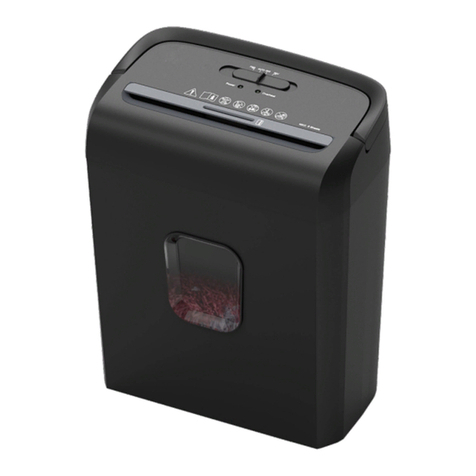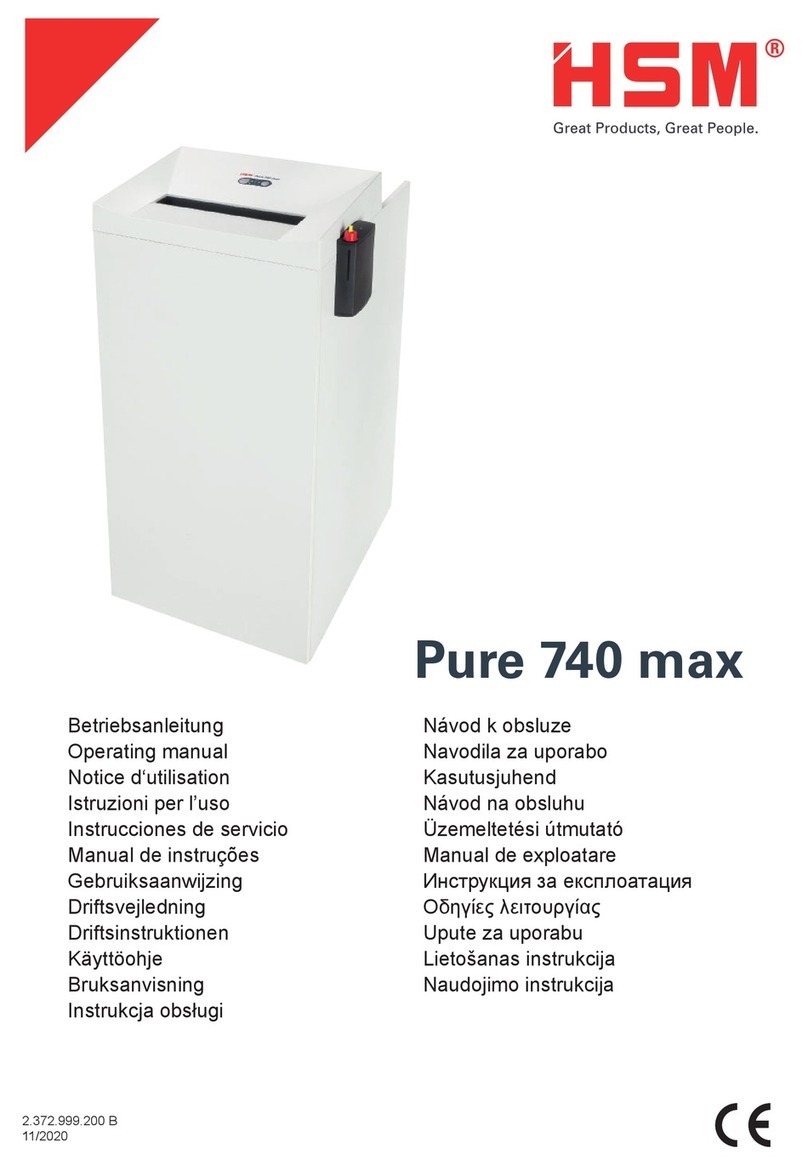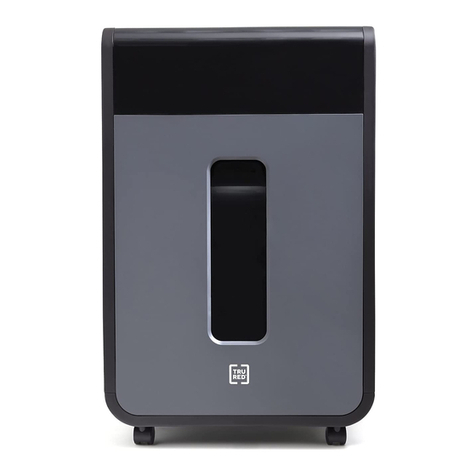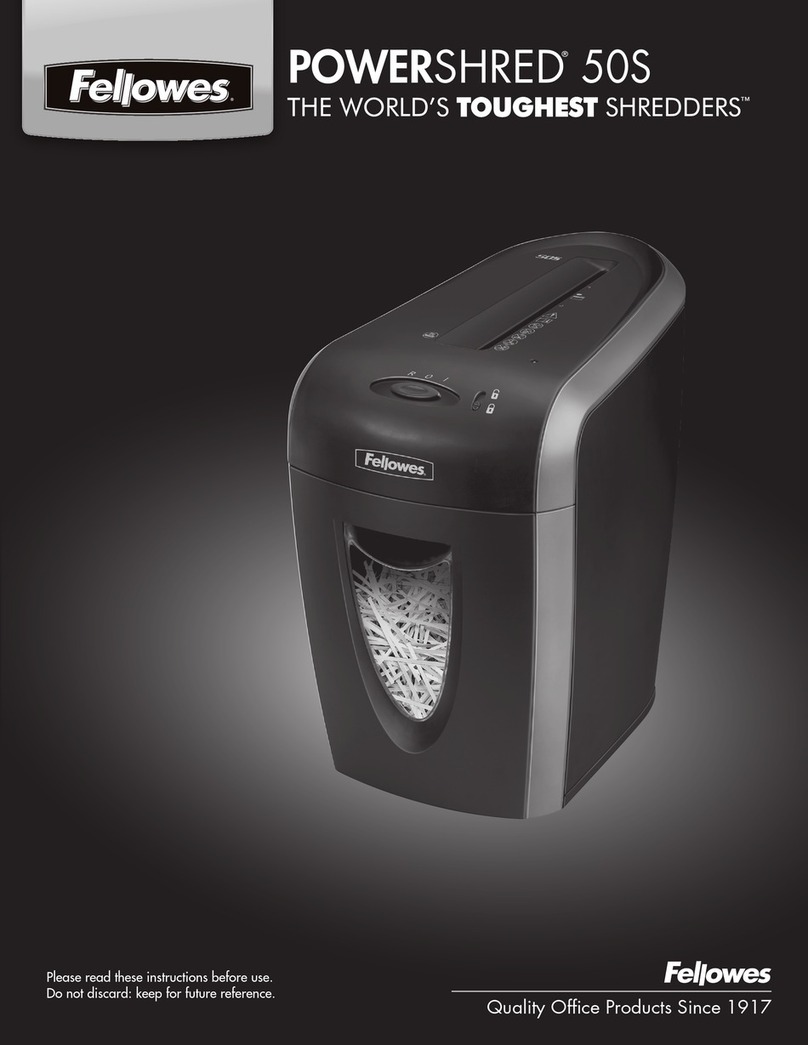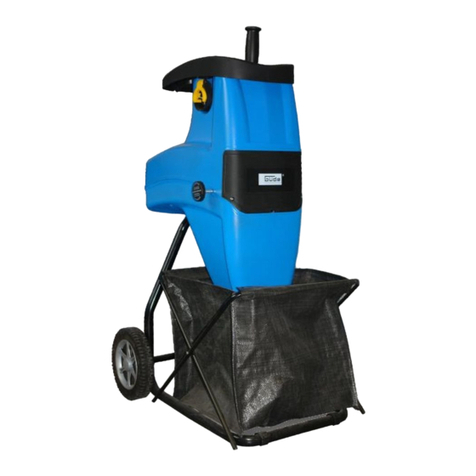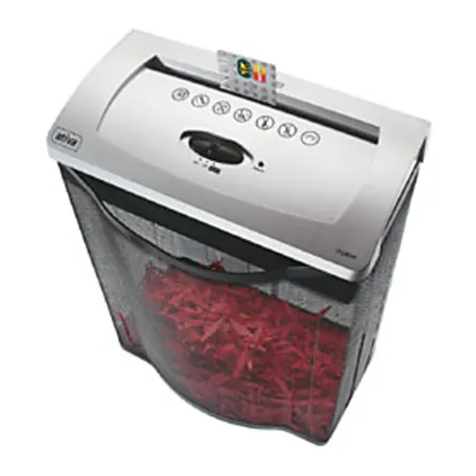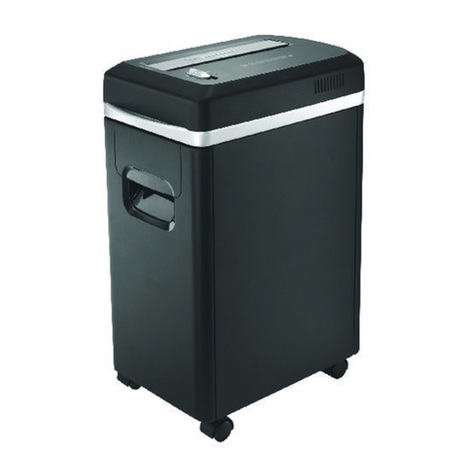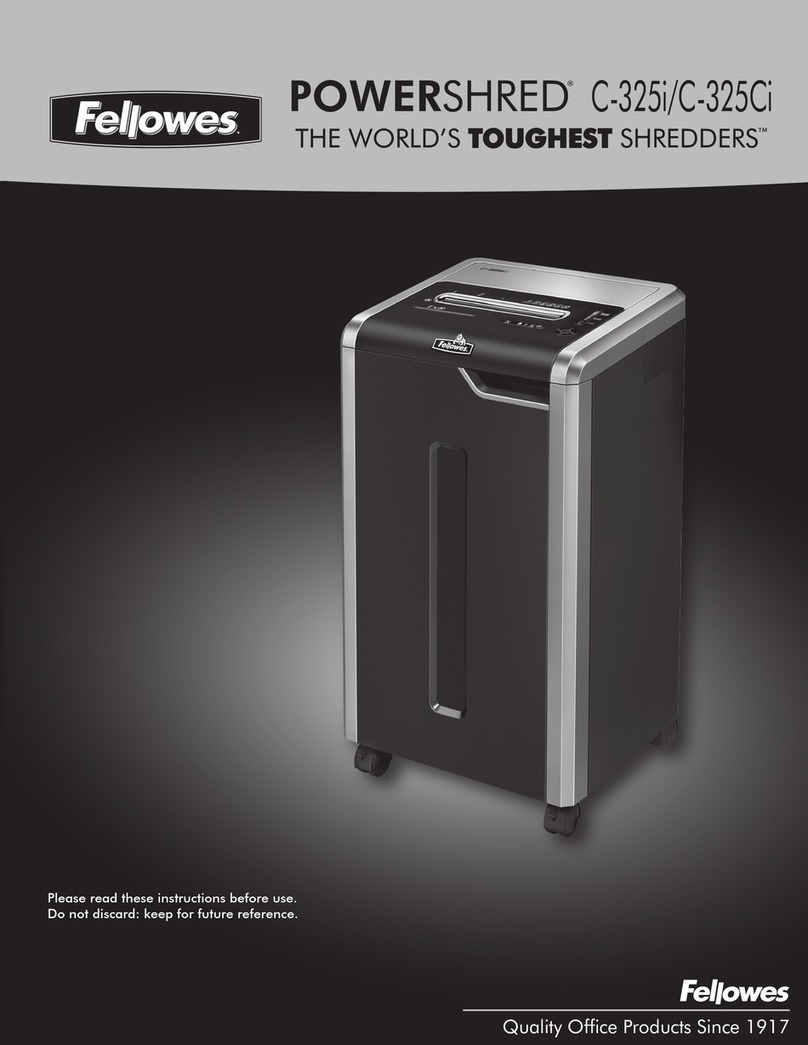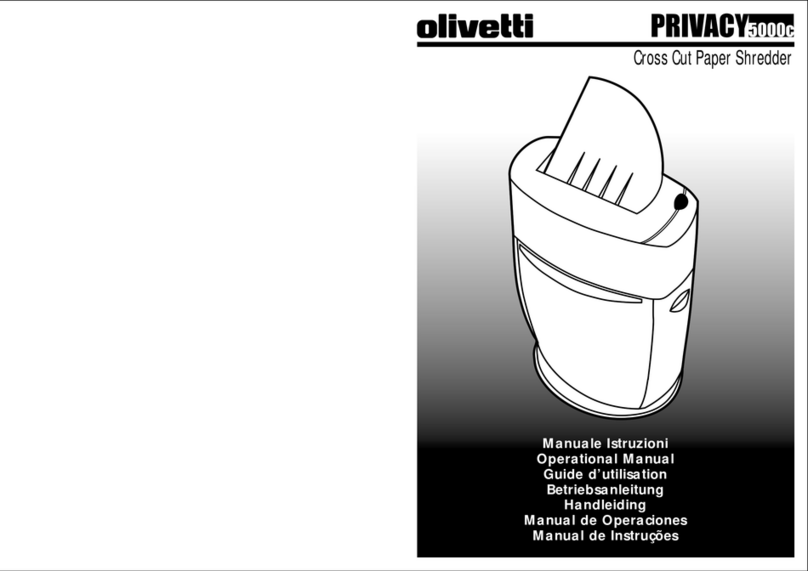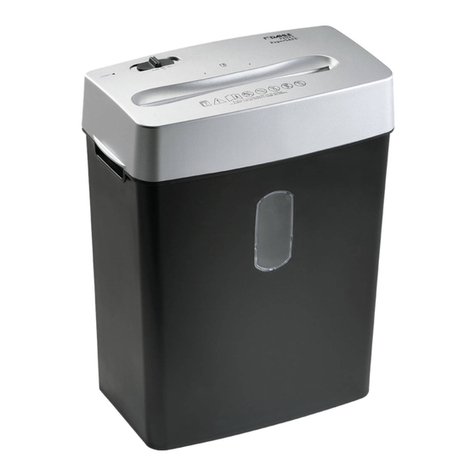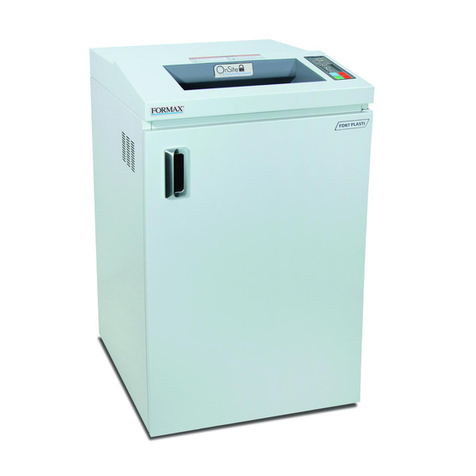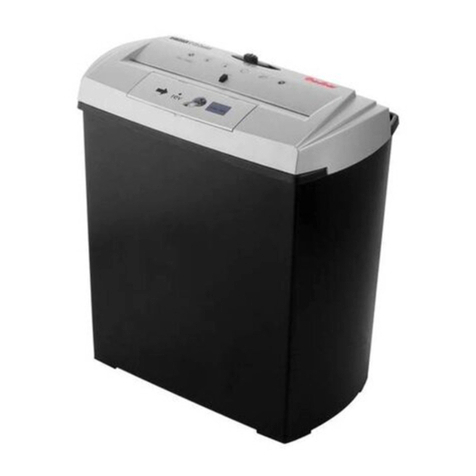OPERATION
Start the engine, increase the engine to FULL throttle
and allow the machine to warm up for two minutes.
Check reverse operation of the hydraulic feed roller
by pushing the operating lever towards the engine.
Do not press the lever beyond the reverse position
otherwise the emergency stop switch will be
activated which will stop the engine. (Fig.2)
Set the speed of the hydraulic feed roller by moving
the setting knob up or down the slot as required.
(Fig. 2)
It is best to start off the roller on a slow setting - the
speed can be increased for light material but must be
reduced for heavier material such as branches up to
4” diameter.
Gently feed in the waste until it is gripped by the feed
roller - once gripped, let go of the waste and the
machine will feed itself at the pre-set roller speed. If
the roller jams, push the operating lever forwards
towards the engine to reverse the roller and drive
the waste back out. In the event of any serious
occurrence,press the operating lever fully to activate
the Emergency Stop.
Attempting to overfeed the machine with too much
waste or too high feed roller speed may cause
damage.
FINISHING WORK
Once the work has finished, allow the machine to
continue running at full speed for one minute to
ensure the rotor housing is completely clear of
debris.
Slowly reduce the engine throttle to tick over then
switch off the ignition switch.
BE CAREFUL OF HOT EXHAUST.
NB Ensure the hammer mill is stationary before
attempting any cleaning or opening of the shredder
housing.
PLEASE NOTE
The Shredder is designed for the volume waste
reduction of material such as garden vegetation,
cardboard, wastepaper, hedge cuttings, and small
branches up to MAXIMUM 4” DIAMETER.
The machine CANNOT handle carpeting fabrics,
metal, string or branches larger than 4” diameter.
It is also NOT recommended that you put glass or
hard plastics into the machine as dangerous fragments
could be thrown out.
BEFORE STARTING
Ensure the machine is on firm, level ground and that
the handbrake is ON. DO NOT USE MACHINE ON
A SLOPE.
Lower the rear stabiliser onto the ground and lock in
to place. (Fig.1)
Set the discharge pipe in the required direction of
discharge and set the angle of the outlet flap. (Fig.1)
Check the engine oil level. (Fig.1)
Check the hydraulic oil level. (Fig.2)
Check fuel level. Only use diesel from a clean
container. (Fig.1 )
TO START ENGINE
Ensure the emergency stop switch is released and the
No-Stress Control panel is switched on. (Fig.2)
Set the throttle to quarter speed. (Fig.1)
Turn ignition switch key clockwise to first position.
Wait until glow plug heater light has gone out, then
turn the key fully clockwise to start the engine. Once
the engine has started, release the key to the run
position. All lights should now go out except the green
“OK” light. (Fig.1)
S A F E T Y
ALWAYS start the engine in the open air
DO NOT smoke when refuelling
ALWAYS stop the engine and the
machine before making any
adjustments, refuelling, moving or
cleaning or when the unit is
unattended
ALWAYS ensure that guards are in place
when the machine is operating or the
engine is running
DO NOT remove any safety guards that
are fitted
ALWAYS wear suitable clothing and
footwear to give personal protection
ALWAYS wear safety glasses and ear
protectors
KEEP hands, feet and clothing out of
openings, discharge and moving parts
when the machine is operating or the
engine is running
DO NOT touch any moving parts or
attempt any maintenance whilst the
machine is running - KEEP HANDS
AND FEETAWAY
DO NOT allow children or anyone
uninstructed to operate the machine -
KEEP ANIMALS AWAY
IF A FAULT develops DO NOT attempt
any repair - immediately contact the
supplier from whom the machine was
obtained
